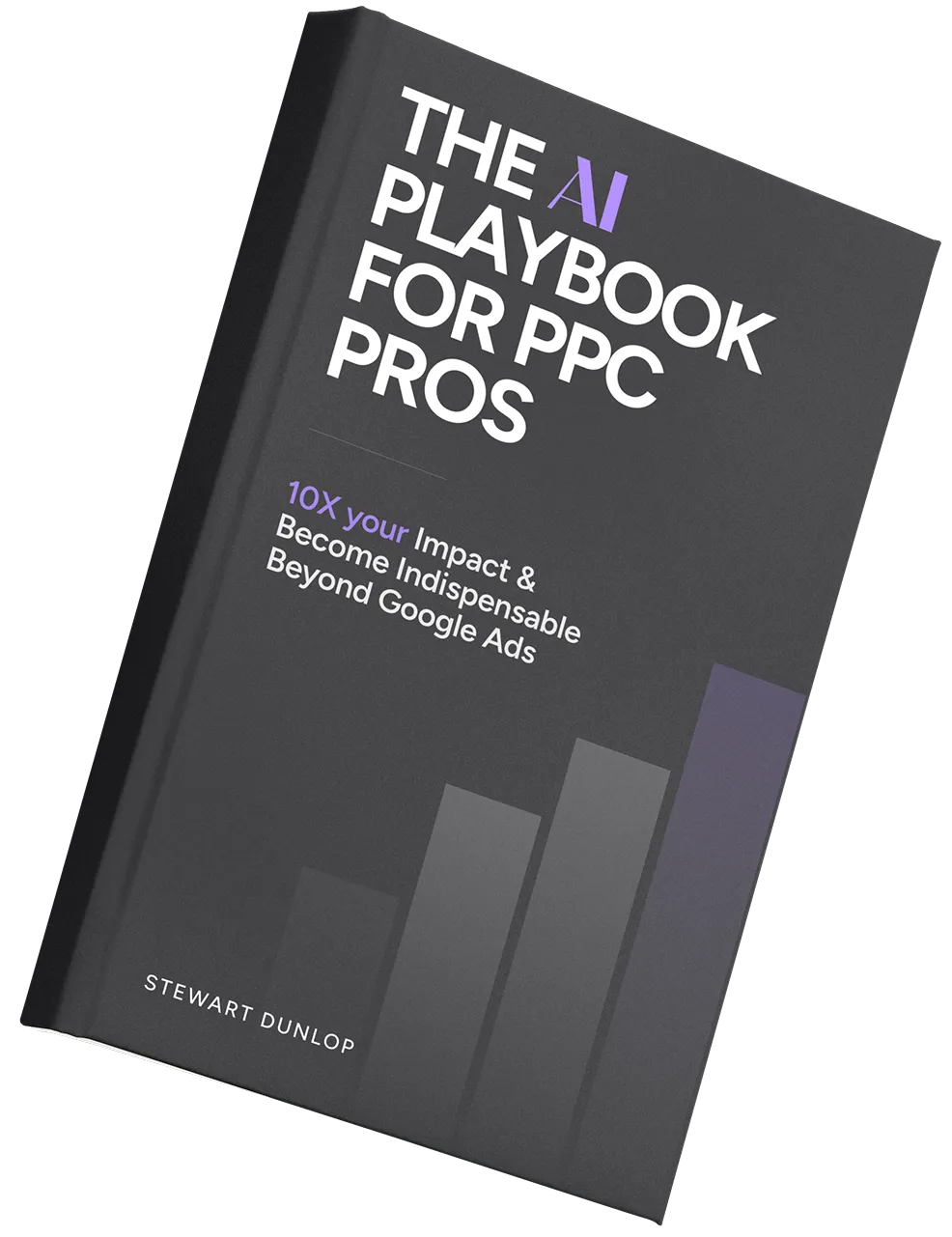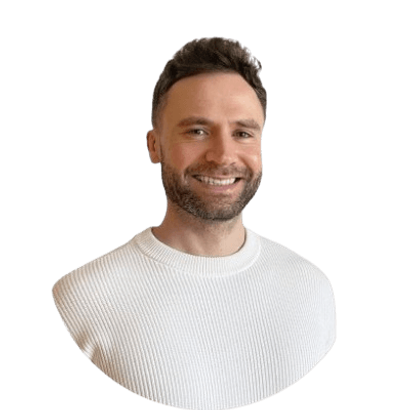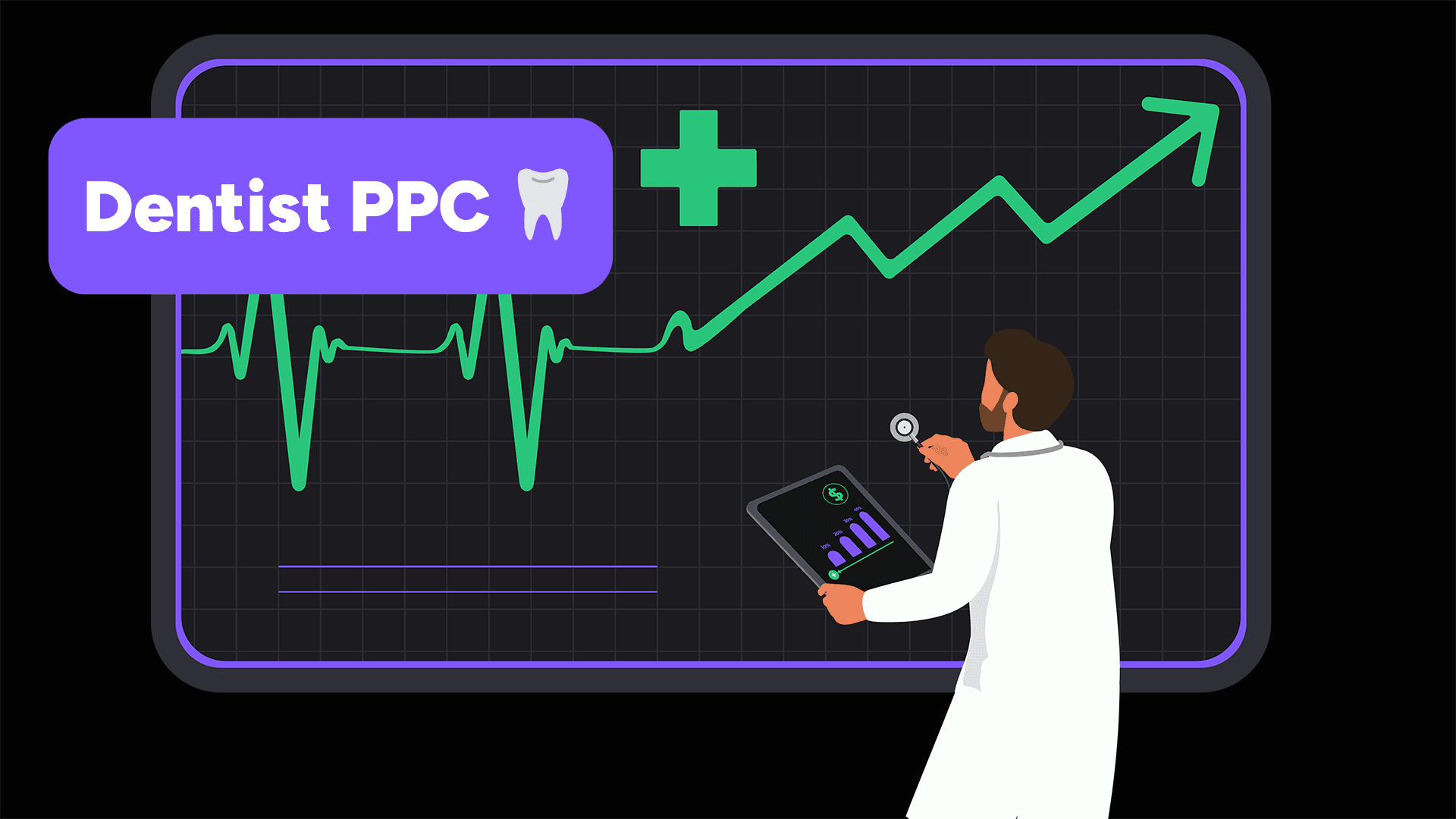
If you run a dental practice, you'll know local competition is fierce.
When people Google "dentist near me" you want your practice to be the one they see.
That's where PPC marketing comes in 😎
Pay-per-click allows dentists to buy ad space on the first page of search engine results, and you only pay when someone clicks on this ad.
It's an incredibly effective marketing channel because you can target people who are very specifically searching for what you're selling. You know people are looking for a dentist in your local area.
Let's break down the cost to acquire a new patient:
Let’s say you get 10 clicks on your ad at $10 per click, costing you $100 in total. On average, you get one new patient for every 10 clicks; and you know that you can typically make at least $2,000 lifetime providing services to them. That’s a return on investment (ROI) of 2000%.
This article explains how dentists can successfully use PPC advertising to achieve huge results.
What Is PPC for Dentists?
If you’ve ever spotted sponsored ads at the top of a Google search, then you’ve seen pay-per-click advertising in action.
PPC allows you to pay for your ad to appear in the sponsored ads section of a Google search.
Here’s an example of what your PPC ad for your dental practice could look like in Google results:
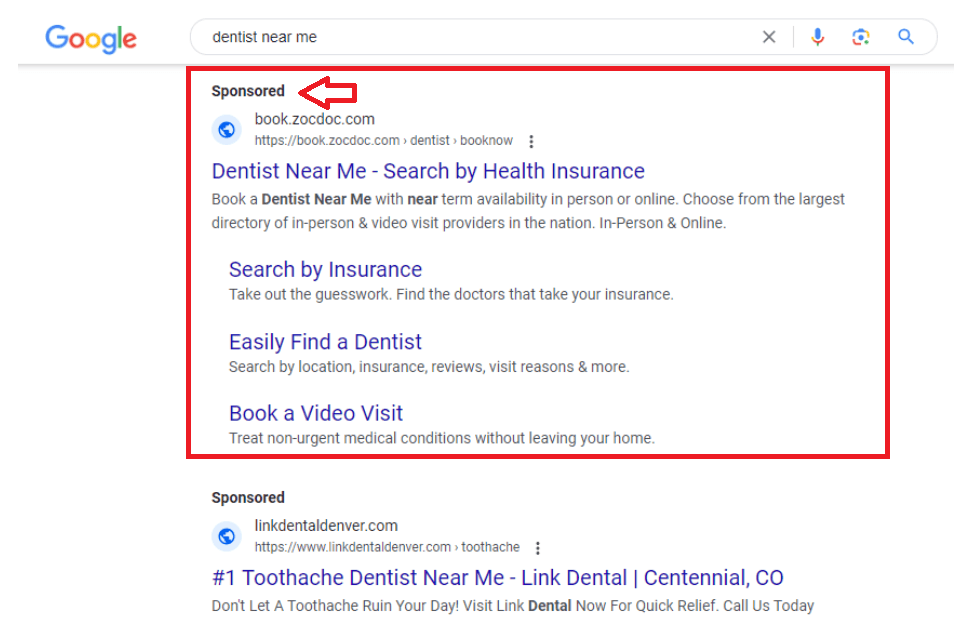
This marketing tactic works because:
- 19% of patients won’t visit a dentist simply because they can’t find a conveniently located practice. If your practice shows up as the first result when they search online, you’re more likely to attract people who are ready to see a dentist.
- 98% of consumers use the internet to find information about local businesses, including dentists. If you’re not using PPC, you’re missing out on an opportunity to attract new patients locally.
- The top three ads in search results receive 41% of the clicks from a given search query. This means you’ll have a better chance of gaining new patients if your ad appears in the sponsored posts section at the top of search results.
While there are many different types of PPC advertising, in this article, we’ll discuss using the Google Ads platform.
The Benefits of PPC for Dental Practices
PPC ads allow you to effectively:
✅ Promote your practice to potential patients who live and work in your area.
✅ Target the exact people you want to attract to your practice based on certain demographics.
✅ Get potential patients to book appointments for your dental services.
✅ Attract people who could become long-term patients, such as someone who needs an ongoing service like fitting braces.
Additional benefits Include...
👍 Driving ready to purchase traffic to your practice’s website.
👍 Getting results within the first week of setting up your ad.
👍 The ability to manage your ad spend closely.
👍 Tracking the performance of your PPC ads.
👍 Retargeting potential patients who have visited your website and not booked an appointment.
How does PPC advertising work?
There are two fundamentals of PPC that you need to know about before you get started.
Dentist Keyword Selection
The first thing you need to understand about PPC is keywords.
Keywords are the search terms that your potential patients are typing into Google when looking for a dentist. An example could be “dentist near me.”
Search engines use these keywords to understand what someone is looking for and display results to them based on their search term.
Keywords are also what the Google Ads platform uses when it decides which sponsored ad to show someone searching for a dentist.
Imagine your practice is located in Colorado
Some keywords relevant to your practice may be...
- Dentist Colorado.
- Dentist in Colorado.
- Colorado dentist.
- Dentist near Colorado.
👉 Further reading: PPC Keywords - What They Are & How To Master Them.
Here are some sponsored ads where dental practices are clearly targeting the keyword “dentist in Colorado”:
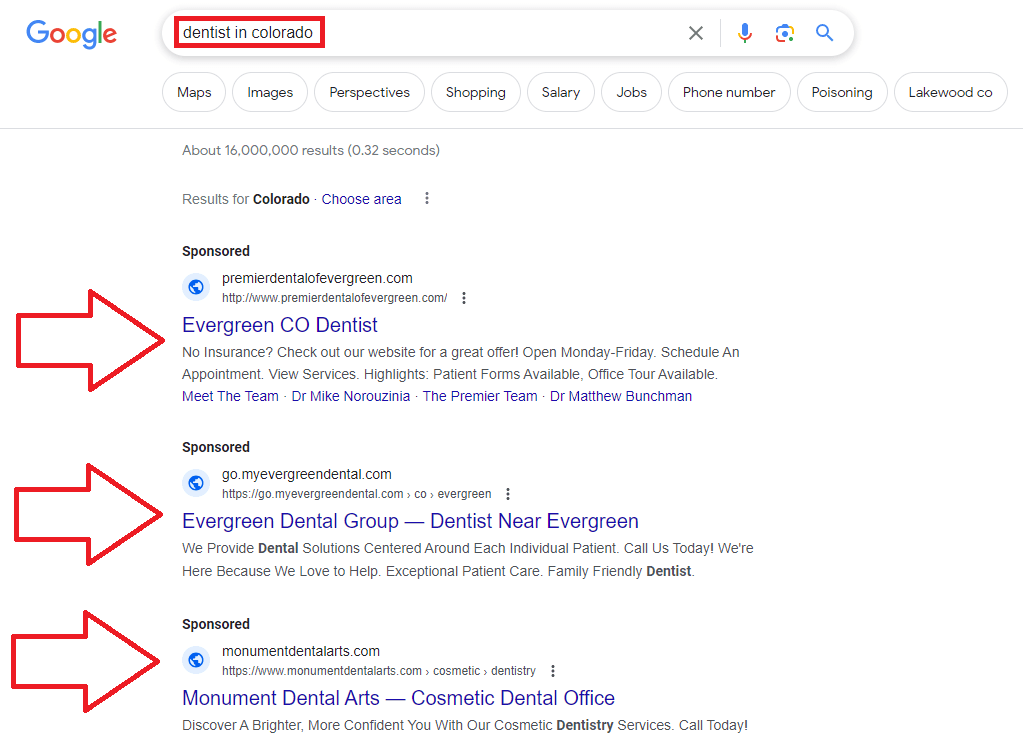
Bidding
Within Google Ads, you set your overall ad budget for each campaign.
This is known as bidding, and it’s the system the Google Ads platform uses to determine which dentist ad is going to be displayed in the sponsored results section.
When a potential patient types in a keyword relevant to your practice, Google starts an auction. This auction involves using the following factors to calculate something called Ad Rank:
- Your bid.
- How relevant your ad is to the keyword being searched.
- The quality of your ad.
- The quality and relevance of the website that the ad is driving users to.
👉 You can learn more about the intricacies of PPC bidding in this guide.
Then, the dentist ad with the highest Ad Rank score is shown first in the sponsored results, followed by other high-scoring ads. Ads without a good score won’t be displayed.
If your PPC ad gets displayed and someone clicks on it, you'll get charged for that click.
The Highest Bidder Doesn’t Necessarily Win
Simply being the highest bidder on a keyword won’t mean your ad will win the auction. Google ensures that it only displays relevant ads to potential dental patients to give them what they want to see.
This is why it’s crucial that your ad copy is relevant to the keyword—which we will discuss later in this article.
How is the price of a bid determined?
When you set up your PPC for your practice, you’ll need to select the keywords that your ad will be displayed for.
Keywords with significant commercial intent, like “dentist Colorado” are usually in high demand by your competitors.
Many of your competitors will be willing to spend a lot to bid on these search terms.
What this means is that bids for these competitive keywords tend to be more expensive.
Example
For example, the cost per click (CPC) of “dentist near me” is $6. As you can see, this is expensive because it likely means that a user is ready to visit a dentist right away.
Also, with more than 710,000 monthly searches nationwide, this keyword is a high-traffic term.
Here’s an example of the CPC and global monthly searches for the “dentist near me” keyword, as displayed on a search engine optimization (SEO) tool called Ahrefs:

On the other hand, “how do braces work” has a much lower CPC at $2.50. This is due to the fact that people searching for this keyword are likely not ready to become dental patients right away.
They are still researching the process of getting braces. This is why it only gets 5,400 monthly searches.
This search term would cost less to bid on than “dentist near me” as there is less competition.
See below:
Getting Started with Dentist PPC Campaigns
Now that you know more about keywords and bidding, let’s unpack each step you need to take to set up your dentist PPC ads on the Google Ads platform.
Determine your campaign objectives
Before you get started, you need to get quite specific about the direction your PPC campaigns for your practice is going to take.
🎯 Target audience
You need to research and define the exact type of patients you want to attract to your practice. For example, this could be local parents of children who need braces.
🤔 Marketing objectives
These may be growing your dentistry practice by a specific number of new patients each month or getting 10 more appointment bookings per day than usual.
📈 How you’ll measure success
You could measure the success of your PPC campaigns based on how many new patients you attract each week or how many phone calls you receive each day from Google ads specifically versus other channels.
📞 Conversion goals
Now, you need to define exactly what action you want potential patients to take when they visit your website.
- Is it filling in a contact form to receive a call back from your practice?
- Is it booking an appointment online?
- Is it phoning in?
There is no limit to the number of conversion goals you can have. In fact, we recommend adding as many as possible!
With our dental clients, we often see phone calls & form submissions through the website as the most common conversion goals.
⏰ Time frame
Once you have these objectives in place, you need to set a time frame for them to be achieved. An example would be getting 10 new patients to visit your practice after the first month of running your braces ad.
Create Beautiful Landing Pages
Before you start your PPC campaign, developing customized landing pages on your website is vital to succeed in a competitive landscape.
Landing Pages - The Difference Maker
Landing pages often make the difference between a mediocre campaign and a successful campaign.
Think about it from your own perspective - How often have you landed on a medicore website and decided that you can find a better experience somewhere else?
That's the power of landing pages.
Humans are visual creatures, and we can quickly recognize what we believe to be a reputable and 'good' brand just through our eyesight, even if we find it hard to define exactly why that is.
At our agency, we offer landing page design for PPC campaigns.
You can set up your PPC ads to direct potential patients to these specific landing pages.
This is where they’ll find the details about your practice that they need to book an appointment with you.
Your landing page needs to be high-quality if you want conversions.
To create a good landing page:
- Use clear and concise messaging: The messaging you use on your landing page should be easy for potential patients to understand. They should know right away how your dental services can benefit them. Steer away from dental jargon and keep things simple.
- Create high-quality content: The content on your landing page should be attractive and highlight the specific services you offer, such as teeth cleaning, cosmetic dentistry, or orthodontics. You may want to consider working with a professional PPC agency that can craft the perfect landing page content for you.
- Incorporate a strong call to action (CTA): Your landing page must include a clear call to action that drives potential dental patients to book an appointment with you.
- Keep your design simple: The design of your landing page should be easy for potential patients to navigate. They may quickly leave your site if they can’t find how and where they should book an appointment with you.
- Include trust signals: Use elements that help build trust with users, like patient testimonials, reviews, or industry awards. This helps instill confidence in your potential patients and may help reduce their concerns about visiting your practice.
- Take caution with pop-ups: You need to make it as easy as possible for a potential client to book an appointment with you via your landing page. Having elements like intrusive pop-ups and ads may discourage users and have them leave your landing page sooner than you’d want them to.
Here’s an example of a great landing page by a dental practice called Tend:
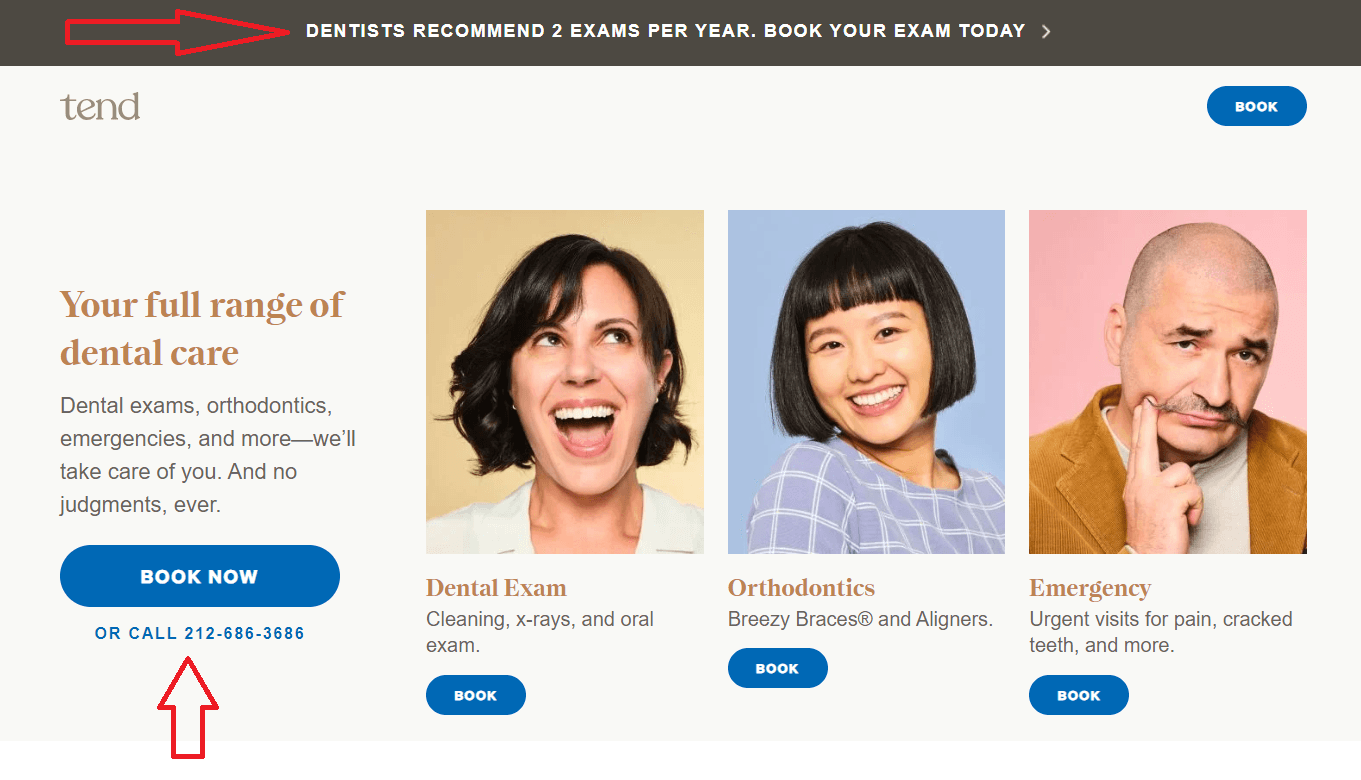
This is a great landing page because:
👉 It has several clear “Book” buttons (CTAs) for patients to make appointments.
👉 Their contact details are front and center for potential clients to see.
👉 It has an enticing headline that encourages new patients to visit Tend.
Set up your Google Ads account
Now, you need to create your Google Ads account. While this may feel daunting, it’s quite straightforward to set up and is completely free.
Step 1: Navigate to Google Ads and choose an objective
You’d need to visit the Google Ads website, click “start now,” and then choose your goal.
You’ll see this form:
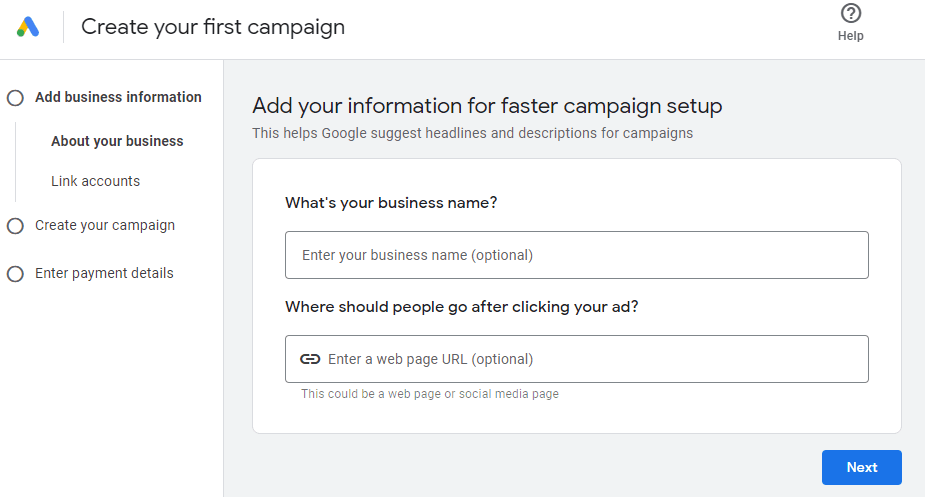
In this case, your goal would be clicks to your landing pages to get people to book an appointment with your practice.
Step 2: Business information and campaign setup
From there, you’ll be able to set up your first campaign by entering your:
- Business information.
- Landing page URL.
- Credit card details.
This is also where you’ll be able to start setting up your audience targeting and your keywords.
📌 Select your target audience
Google Ads allows you to get highly specific about the potential patients you want to target. Using the platform, you can target demographics like a patient’s:
- 🎯Location.
- 🎯 Age.
- 🎯 Gender.
- 🎯 Household income.
- 🎯 Interests.
- 🎯 Online behavior.
- 🎯 Frequently searched keywords.
For example, if your practice is in Denver, Colorado, you could target people between the ages of 25 and 60 who live in Denver and have a household income in the top 10% indicating they can afford dental care.
Example - Geo Targeting
The example below shows just how specific you can get with your targeting with Google Ads, especially when it comes to reaching potential patients in your exact area.
You can see that the first and third sponsored results below are clearly dentists in Denver who are targeting potential patients in the area:
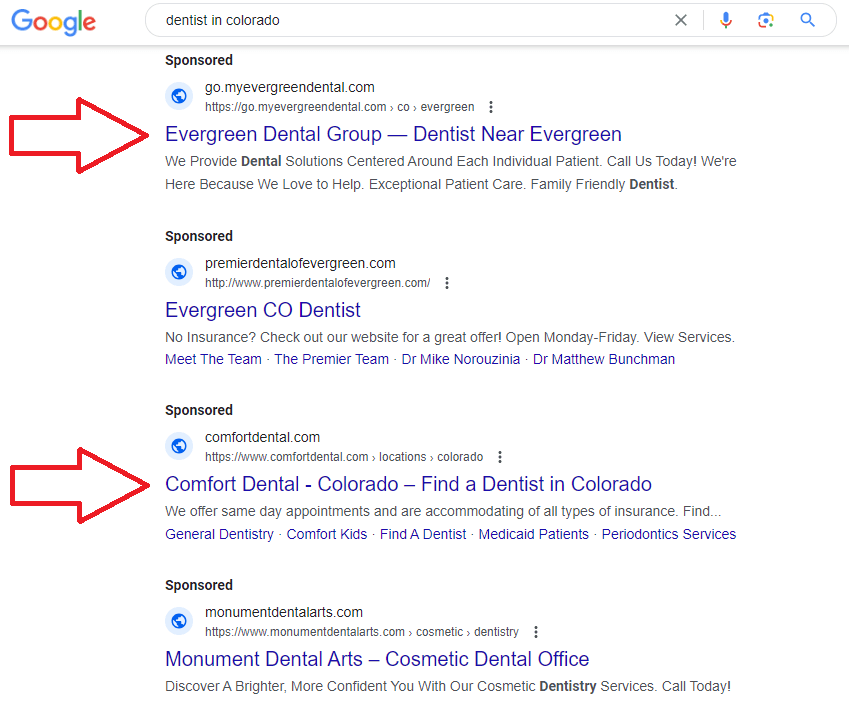
📌 Choose your keywords
You’ll need to consider the kinds of keywords your patients are likely to search Google for. You can use any of these keyword research tools to help you with this step:
➡️ What to look for in a good keyword
Using a keyword research tool, you need to find search terms that:
- Are relevant to your dental practice: Look for terms that target the type of dental patient you want to attract.
- Have strong commercial intent: In other words, the person searching for these keywords is ready to book an appointment with a dentist.
- Are affordable: Look at the CPC for the terms you’re thinking about choosing for your campaign.
- Not too competitive: Keywords with a lower keyword difficulty—a metric that indicates how difficult it is to rank for a keyword organically—tend to be less expensive.
If your practice is in Denver, Colorado, a good keyword to choose would be “braces denver.”
It has a low keyword difficulty, which means it’s not a highly competitive keyword.
It also has a relatively low CPC of $6.
If just one patient books an appointment with you for braces, you’ll easily generate a good return on ad sped (ROAS) for this term.

Narrow Your Keyword List
Now that you’ve found keywords that your potential patients are searching for, you need to narrow down this list to find the exact search terms you want to focus on.
For example, if you specialize in orthodontics at your Denver practice, your keyword list might be:
- Where to get braces
- Process of getting braces
- Is getting braces painful
- Cost of getting braces
- Braces in Denver
- Braces Denver
- Orthodontist Denver
- Orthodontics Denver
However, there may be several dentists in your area who offer braces as a service, so you may want to whittle down your list and only focus on:
- Braces Denver
- Orthodontist Denver
➡️ Use Negative Keywords
The final step when it comes to selecting your keywords is choosing your negative keywords.
These search terms will stop your ad from being displayed when people type them into Google.
For example, if you’re only looking to attract patients in Denver, your negative keywords could be used to exclude people searching in Pueblo or Durango.
Or, if you don't offer a specific type of service, like "emergency dental care" then you'll want to make sure you add "emergency" as a negative keyword.
👉 For more inspiration, check out our negative keyword examples list.
📌 Create your ad
Your PPC ad needs to be relevant, high-quality, and compelling. This is how you’re going to convince people to book an appointment with you, so it needs to be good.
If you’re not particularly creative, you may want to get professional assistance with this step since ad copy must be written well to be effective.
Elements that make good ad copy include:
- Keyword relevance: Your copy should be hyper-relevant to the keywords you are targeting. If your keyword is “cosmetic dentistry Colorado,” your ad copy should speak to cosmetic dentistry and mention your practice location.
- Compelling headlines: You need an attention-grabbing headline at the top of your ad. This should convey your main message—such as being an affordable dentist—in a concise way.
- Clear CTAs: Just like your landing pages, your Google Ad should include a clear CTA about booking an appointment or calling your practice.
- Matching user intent: Think about the user’s intent behind a search query and address this in your copy. If the user is searching for an emergency dentist, ensure your ad copy states you’re available immediately.
Here's a well written Google ad for dentists:

This ad copy:
- 👉 Has an enticing headline that hooks the user in right away.
- 👉 Includes a clear call to action to book an appointment online.
- 👉 Appeals to the fear that many people have about visiting dentists.
💰 Set Your Bidding
The next part is to set your budget and choose a bidding strategy for your campaign. A bidding strategy can be described as the rules you choose to control how much money you spend on each click.
Some popular bidding strategies include:
- Manual cost-per-click (CPC): You set the maximum amount you’re willing to pay for a click to your dentistry landing page, and you have control over individual keyword bids.
- Enhanced CPC: An automated bidding strategy where Google will adjust your bids based on the likelihood of a potential dental patient booking an appointment.
- Target cost per acquisition (CPA): You specify what you want each new patient (an acquisition) to cost you, and Google Ads adjusts your bids accordingly.
📌 Tracking Your Campaign
Once your first PPC campaign is up and running, you can start monitoring your ad’s progress. The beauty of Google Ads is that they’re highly trackable, and your results are measurable.
Google Analytics provides PPC performance data soon after you’ve launched them. You can track metrics like:
- Cost per click (CPC): How much a click is costing you.
- Sessions and users: How many potential patients have visited your landing page as a result of your ad.
- Impressions: How many times your ad has been shown to potential patients.
This data helps you understand:
- How your campaign is performing.
- Where you need to make changes or tweaks to get better results.
- How your ad budget is being spent.
The example below shows how a PPC campaign has been performing over a month.
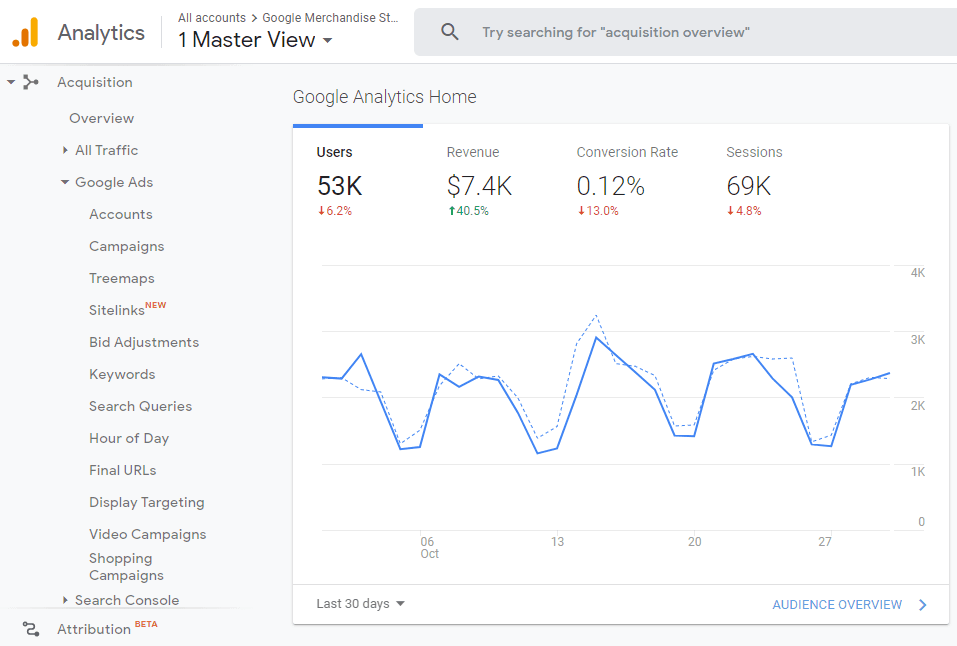
Let’s unpack this example. It shows us that:
- The performance of this ad seems to be cyclical, getting fewer clicks over weekends.
- This pattern has remained relatively stable over the last 30 days.
- The conversion rate metric is down by 13%, which could mean that the landing page needs to be worked on to get visitors to convert.
Retargeting
Another massive benefit of PPC advertising is something called retargeting—also referred to as remarketing.
You can use this feature to target potential patients who have visited your practice’s website but haven’t booked an appointment.
Here’s how retargeting works:
First Interaction - A potential patient visits your website through your Google ad but doesn’t book an appointment.
🍪 Cookie placement - A cookie, which is a small piece of code, is added to the user’s web browser while they’re on your landing page. This cookie tracks the person’s online activity.
Re-targeting Ads - We can then display this user with future advertisements on Facebook, Instagram, YouTube and other websites they visit.
✅ Re-engagement - The idea is that retargeting will get your potential patient to return to your website and book an appointment.
Here is an example of a user being served a display ad on Instagram for a dental practice after searching related terms on Google:
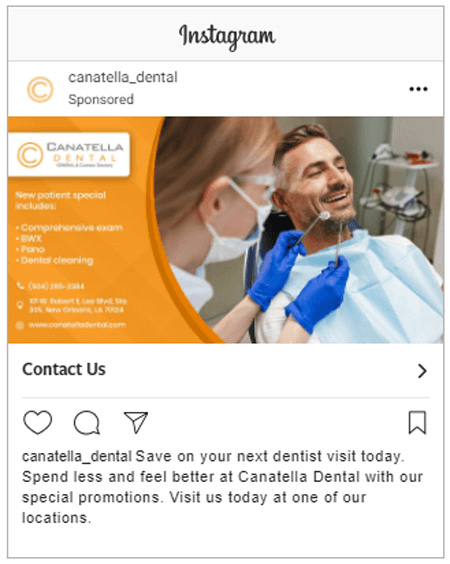
📌 Optimize PPC Campaigns
The final step is to use the information you’ve gained from tracking your campaign to optimize your strategy.
For example, if you see that you’re spending a large chunk of your budget on a keyword that isn’t converting into new patients, you’ll know from the data that it’s time to try another search term.
The more you refine your campaigns based on the available data, the better they will perform, and the more new patients and profit you'll get.
Advanced PPC Tactics for Dentists
Let's dive into a few more advanced tactics now to take your PPC to the next level.
Set up local service ads
Local Service Ads (LSAs) are pretty awesome, and reserved only for local, verified services.
These ads appear at the top of Google Search results (above everything else!) when people search for specific services in their area.
Check out the example below.

To use the service, you need to contact Google and get your business verified. This process includes background checks, license checks, and insurance checks to ensure that the business meets Google’s standards for trustworthiness.
However, by doing so, you’ll become Google Screened or Google Guaranteed, increasing trust in your business.
💡 Local service ads are still fairly new, so they represent a great opportunity to jump through these hoops in order to gain an edge over your local dental competition.
Remarketing Lists
Remarketing Lists for Search Ads (RLSAs) is a feature that allows you to see which users visited your website and what they did while they were there.
Let's say a user visits your dental practice's website and fills out a contact form inquiring about teeth whitening services but doesn't book an appointment immediately. You can track this action using cookies.
Next, you can create a remarketing list for users interested in teeth whitening by filling out the contact form. When these users later search Google for related terms, like "best teeth whitening options" or "local teeth whitening service,"
You can use RLSAs to:
- Increase your bids for these high-value prospects, making your ad more likely to appear at the top of their search results.
- Show them tailored ads in other places, such as a special offer on teeth whitening services.
Ultimately, you're focusing on users who already visited your website and therefore are already familiar with your brand. It's a great way to drive more bookings and improve your conversion rates.
Dynamic Search Ads
You can also get Google to create your ads with Dynamic search ads. This feature automatically generates headlines and selects relevant landing pages from your dental practice's website.
Using AI, they pinpoint keywords related to dental services that you might not be targeting yet. This feature makes keyword management easier and expands your reach.
This is literally Google Ads on 100% autopilot.
Be careful though, for this to work you need to be extremely confident that your website is a high-converting machine, otherwise you'll just end up paying for clicks that never convert.
Summary
🦷 Pay-per-click (PPC) advertising is a phenomenal way for dentists to promote their practices, attract new patients, and get qualified leads quickly.
- Setting up your dental PPC campaign involves creating a Google Ads account and optimizing some key tactics.
- You're only competing against your local market, where competition isn't fierce.
- No time lag on PPC ads, which means you can achieve success very quickly even in a saturated market.
